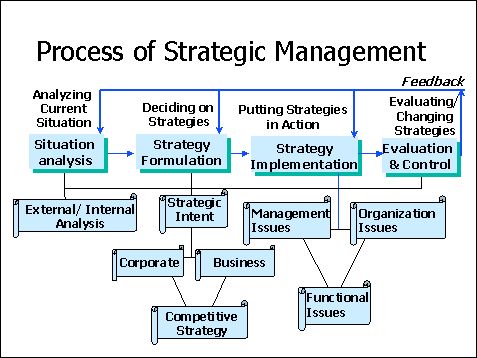As a business owner or manager, it’s essential to have a strategic plan in place to achieve long-term success. The strategic management process is a fundamental approach that helps businesses achieve their goals and objectives by aligning their resources and activities with their vision. But where should you start? Here, we’ll delve into the first step in the strategic management process and everything you need to know about it.
Defining the Business’s Mission Statement
The first step in the strategic management process is to define the business’s mission statement. The mission statement is a concise statement that articulates the company’s purpose, values, and objectives. It is a crucial document that guides the company’s decision-making process and provides employees with a clear understanding of the company’s goals and objectives.
Conducting a SWOT Analysis
The next step in the strategic management process is to conduct a SWOT analysis. This analysis helps a company identify its strengths, weaknesses, opportunities, and threats. By doing so, the business can develop strategies to maximize its strengths, minimize its weaknesses, capitalize on its opportunities, and manage its threats.
Identifying the Key Performance Indicators
The third step in the strategic management process is to identify the key performance indicators (KPIs). KPIs are measurable targets that help the company track its progress and performance towards achieving its goals. KPIs should be specific, measurable, realistic, and time-bound to ensure that they are effective.
Developing a Strategic Plan
The fourth step in the strategic management process is to develop a strategic plan. The strategic plan outlines the specific actions that a company will take to achieve its goals and objectives. It includes the strategies, tactics, and timelines that will be used to implement the plan.
Allocating Resources
The fifth step in the strategic management process is to allocate resources. Resources include financial, human, and physical resources. By allocating resources, the business can ensure that it has the necessary resources to implement its strategic plan.
Implementing the Plan
The sixth step in the strategic management process is to implement the plan. This involves putting the strategies, tactics, and timelines outlined in the strategic plan into action. It also involves monitoring the progress and making adjustments as necessary.
Evaluating the Results
The seventh step in the strategic management process is to evaluate the results. This involves analyzing the performance of the company against the KPIs identified in the third step. The evaluation will help the business identify areas where it needs to make adjustments to ensure that it is on track towards achieving its goals.
You might find these FREE courses useful
- Top Essentials Of Management And Strategic Planning Courses – Learn Essentials Of Management And Strategic Planning Online
- Strategic Management Certificate | IIM Kozhikode | Coursera
- Strategic Leadership and Management Capstone
- Strategic Management
Revising the Plan
The final step in the strategic management process is to revise the plan. The strategic plan is not a static document, and it should be revisited regularly to ensure that it remains relevant and effective. By revising the plan, the business can adapt to changes in the market, the economy, or the company’s internal environment.
In conclusion, the first step in the strategic management process is defining the company’s mission statement. This step sets the foundation for the rest of the process. By following the rest of the steps, a business can develop a clear strategic plan that aligns its resources with its goals and objectives, and ultimately achieve long-term success.
